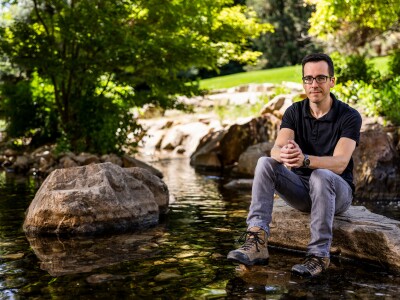At a seminal meeting in 1987, physicists shocked the scientific community when they reported that certain ceramics can conduct electricity with no resistance at low temperatures. Since then, scientists have been dreaming of trains
Near the 20-year anniversary of that scientific symposium, called “the Woodstock of physics” in contemporary media accounts
“Whoever finally succeeds in discovering a room temperature superconductor is going to win a Nobel Prize -- it’s a no-brainer,” said Campbell. “But until you know how the atomic structure of a material relates to its properties, you don’t know what to do to change the properties to make a better superconductor. When you know what’s bad, you can try to remove it, and when you know what's good, you can try to add more of it.”
The team took tiny samples of ceramic crystals to what Campbell calls the most powerful X-ray machine in the world, a billion-dollar facility located at Argonne National Laboratory
There are two principal types of copper-oxide ceramics that usually don’t even conduct electricity at room temperature, but become superconductors at low temperature. One type behaves quite differently from the other, which had scientists wondering if two separate physical mechanisms might be at work. It was a long-standing mystery why so-called “electron-doped” ceramics cannot superconduct until after they have been subjected to special high-temperature chemical treatments.
The team Campbell was part of showed that the treatments repair previously unreported atomic-scale defects in the material. Further, once the defects are repaired, the basic features of the two types of materials are very similar after all, suggesting that one theory is enough to explain the mechanism of ceramic superconductivity.
“With the theory of ceramic superconductors in a state of confusion, anything we can do to eliminate distractions is very helpful,” Campbell said. “We propose that efforts to synthesize defect-free materials should lead to better superconductors.”
Other researchers who contributed to the study have affiliations with the National Institute of Standards and Technology, the University of Maryland, Oak Ridge National Laboratory, Argonne National Laboratory, and Tokyo’s Central Research Institute of Electric Power Industry.










